GM HEI Module Classes
General Motor's line of HEI ignitions come in many variations, as do the HEI ignition modules used in them. This page outlines a partial breakdown of some of the most common ones.:
The modules can be broken down into several classes characterized by the number of pins they have and the labeling of the pins:
4-pin class : Has pins B and C on one end. W and G on the other end. 5R-pin class : Has pins B and C on one end. R, L, and H on the other end. 5D-pin class : Has pins B and C on one end. D, L, and H on the other end. 7-pin class : Has pins + and C on one end. B, R, E, N, and P on the other end.
4-Pin HEI Modules
The 4-pin class of HEI modules can be further broken down into two orders characterized by how they are internally controlled:
MC3334 order : Uses the Motorola MC3334 IC chip to extend the dwell angle at higher RPMs.
Non-MC3334 order : Uses some other control method to extend the dwell angle at higher RPMs.
The MC3334 order of 4-pin HEI modules can be broken down into at least two families characterized by the resting-state voltage on the W terminal.
1.25v family : Has steady 1.25v on the W terminal when there is no input signal. 0.77v family : Has steady 0.77v on the W terminal when there is no input signal.
The Non-MC3334 order of 4-pin HEI modules, so far, has only one family, characterized by the resting-state voltage on the W terminal.
0.0v Family : Has steady 0.0v on the W terminal when there is no input signal.Determining 4-Pin HEI Module Family
It is relatively easy to determine which family a particular 4-pin module belongs to. To do this, apply anywhere from 9v to 12v to the B terminal. This will energize the module.
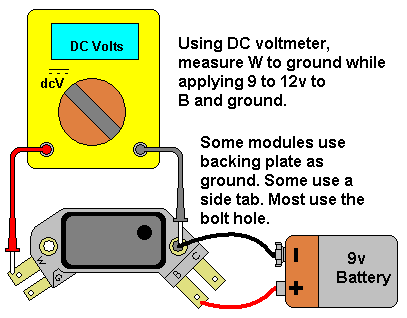
While energized, measure the W terminal. The resulting voltage should fall near one of the three voltages for which the families are named. That is, the voltage should be near 1.25v, or near 0.77v, or near 0.0v.
Here are some resistance traits that may be helpful to confirm a particular model's type. These may not be as reliable as the voltage test above.
With no power applied:
The Duralast DR100 (1.25v family) measures:
From W to ground is about 56k ohms.
From G to ground is about 66k ohms.
From W to G is about 10k ohms.
The GM factory module (0.77v family) measures:
From W to ground is about 15k ohms.
From G to ground is about 110k ohms.
From W to G is about 125k ohms.
The new stock BWD CBE4P (0.0v family) measures:
From W to ground is about 10k ohms.
From G to ground is about 20k ohms.
From W to G is about 10k ohms.
1.25v family of 4-pin HEI modules
This family is relatively newer, and is possibly still the most common one available. It was originally most commonly available from Wells, and was given the model number DR100. For many years this model was available under several different brand names and a few different model numbers. Here is one example:
Autozone, Duralast DR100 4-pin HEI module:
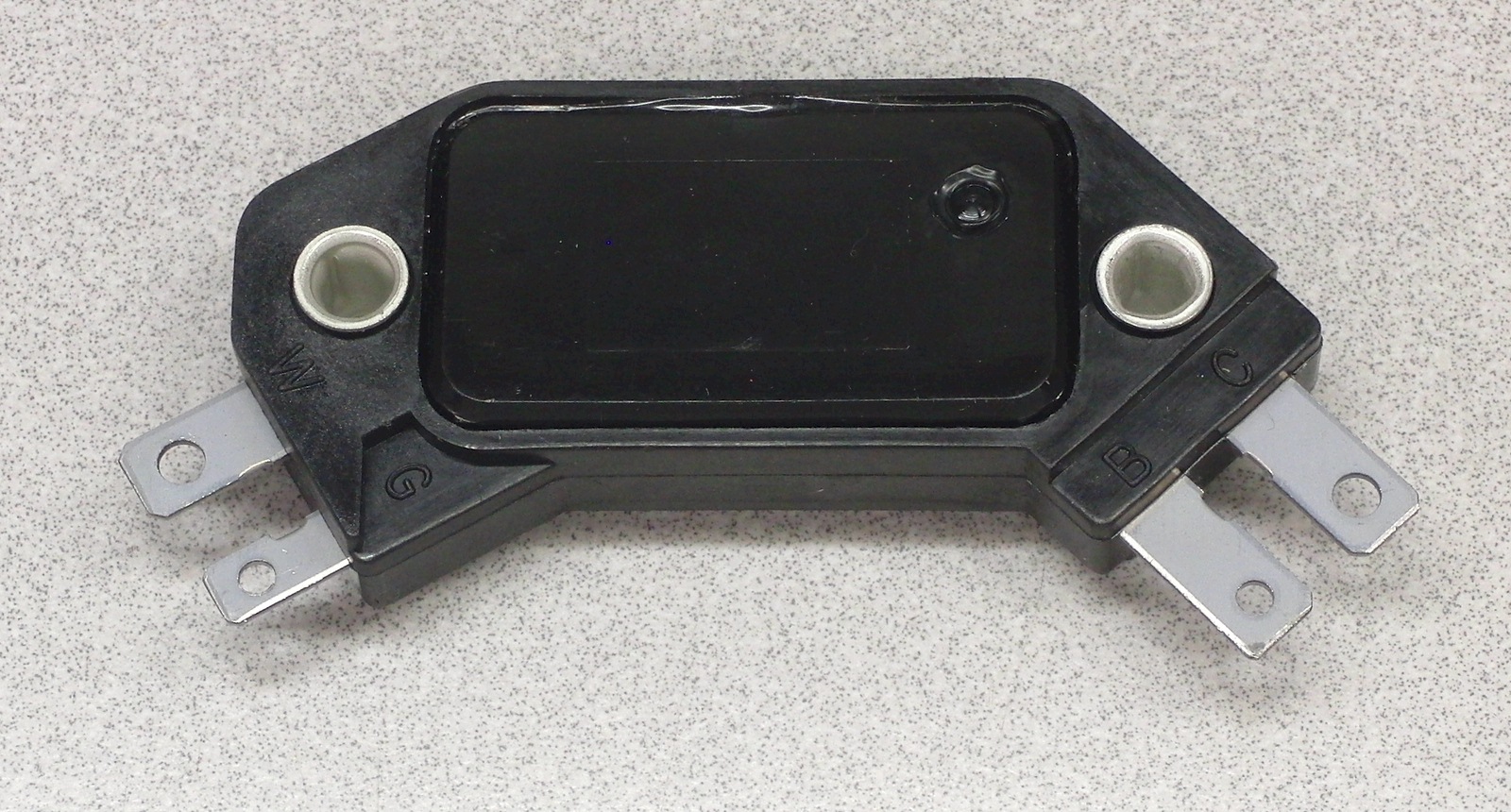

Here is a partial list of some of the members in this family:
Wells : DR100
Duralast : DR100
Niehoff : DR400CS and DR100
Borg Warner : DR400CS and DR100
BWD : CBE4 and CBE4P Old stock only. New stock no longer in this family.
Because this was the most common type available for the last several years, the notes for this family of modules is relatively extensive. They are written for the Wells DR100, but will likely apply to all models in this family.
Notes on 1.25v, Wells DR100, 4-pin HEI module, with some extra notes on its usage with Kawasaki KZ pickups, and Honda CB pickups: Hei4pinDR100moduleNotes.txt
0.77v family of 4-pin HEI modules
This family is older, and was possibly designed by GM itself. It is generally not very available, except as old stock or used. Here is one example:
General Motors factory 4-pin HEI module:
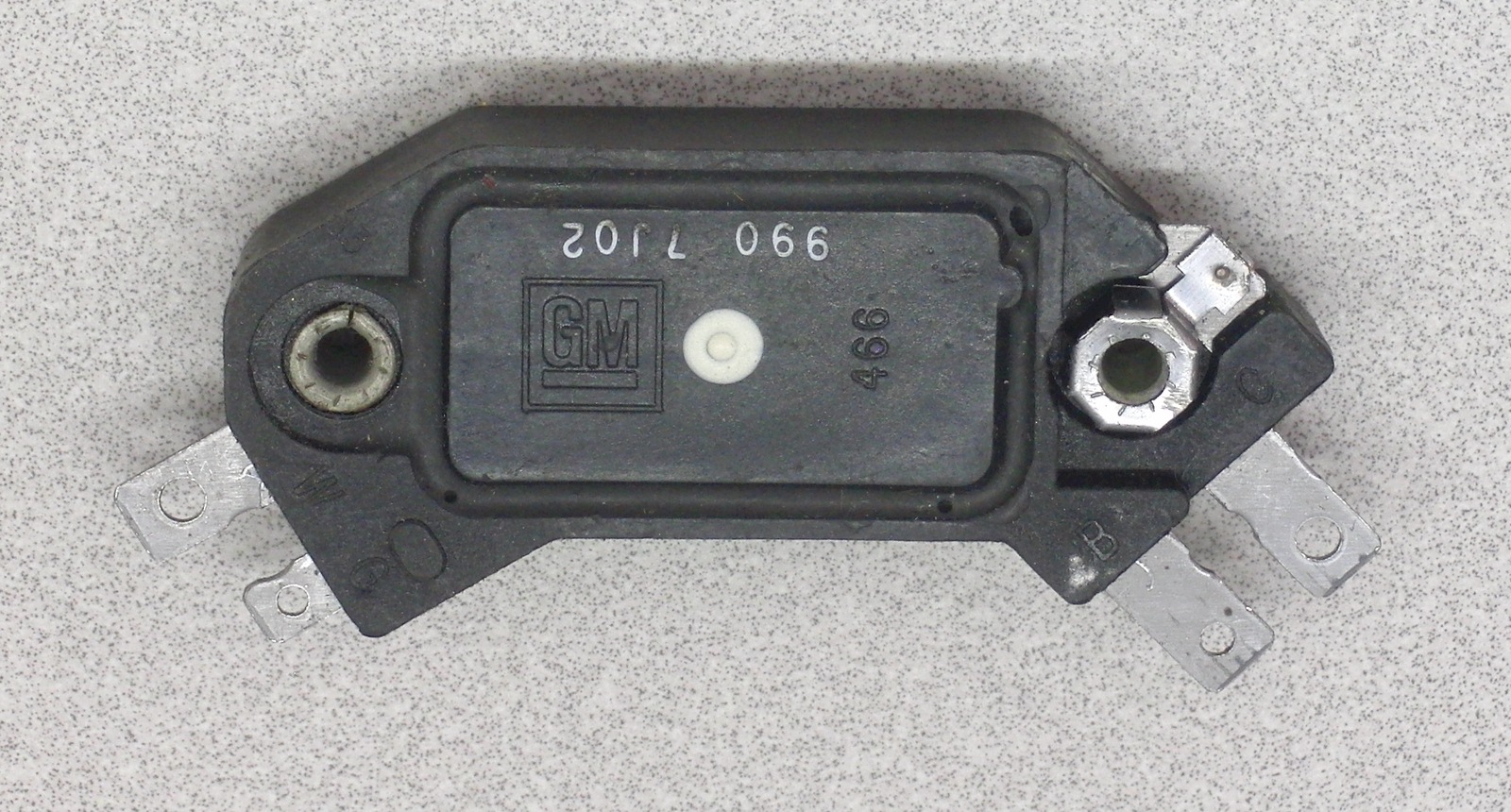

This is the only example identified in this family so far:
GM : factory part.
This module behaves very similarly to the 1.25v family of modules. See the notes for the 1.25v modules for general information. The notes for this 0.77v family of modules consist of the threshold voltage differences from the 1.25v family of modules.
Notes on 0.77v, GM factory, 4-pin HEI module, threshold specifics: Hei4pinGMfactoryModuleNotes.txt
0.0v family of 4-pin HEI modules
This family is the most recent. It may become more wide spread since it is likely microcontroller based, and thus far easier/cheaper to alter/improve the product line. Unfortunately, this ability may actually cause headaches for home enthusiasts attempting to use them for unintended purposes as the manufacturer may alter the module's behavior. This means the end user has no way of knowing if the product on the store shelf behaves the same as one purchased previously. Here is one example:
O'reilly's, BWD CBE4P 4-pin HEI module:

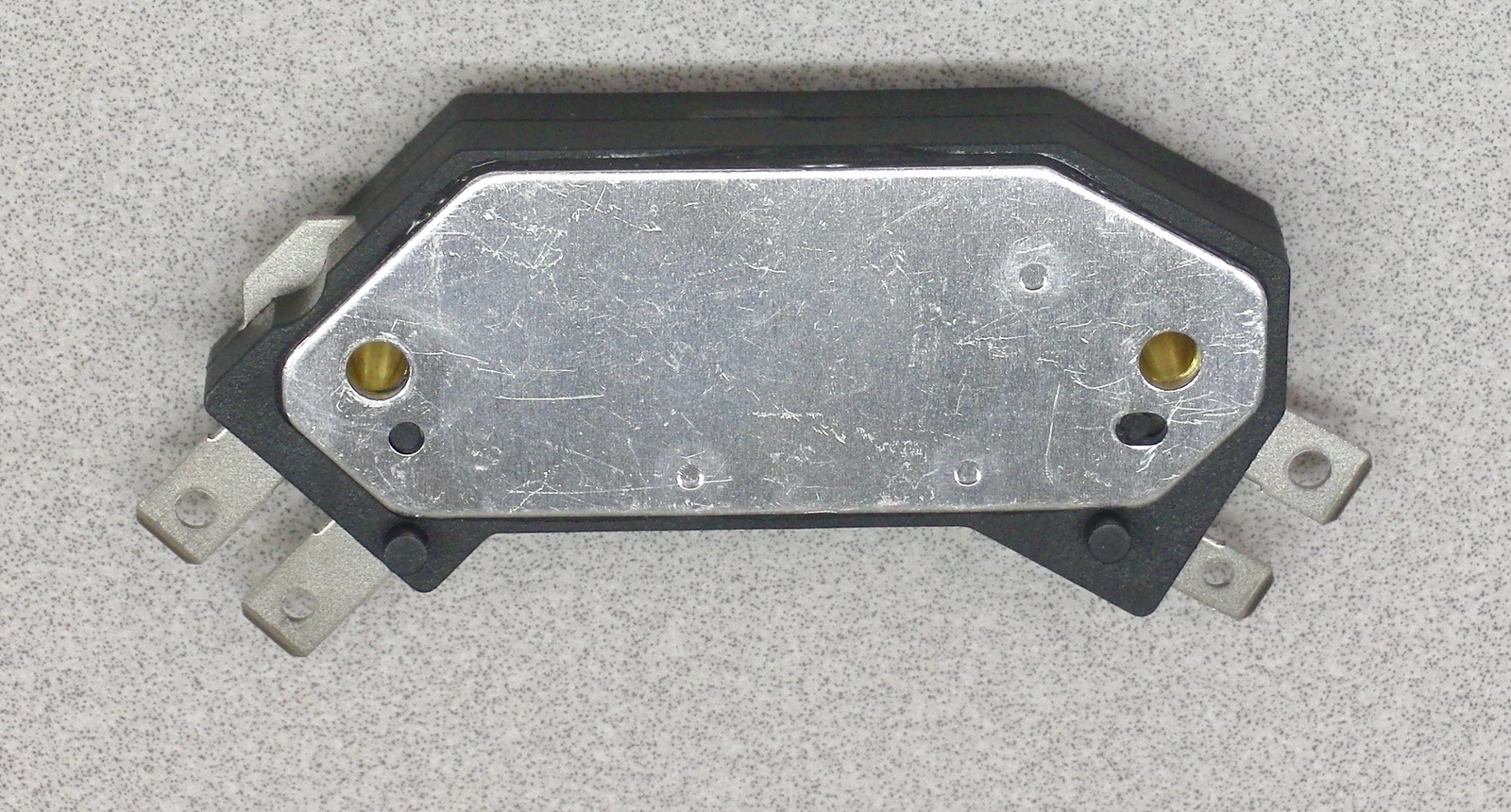
Here are the only known members in this family so far:
BWD : CBE4 and CBE4P New stock only. Old stock in different family.
Notes on 0.0v, BWD CBE4P, 4-pin HEI module: Not Yet Available
5R-Pin HEI Module Class
Autozone, Duralast DR137 5R-pin HEI module.
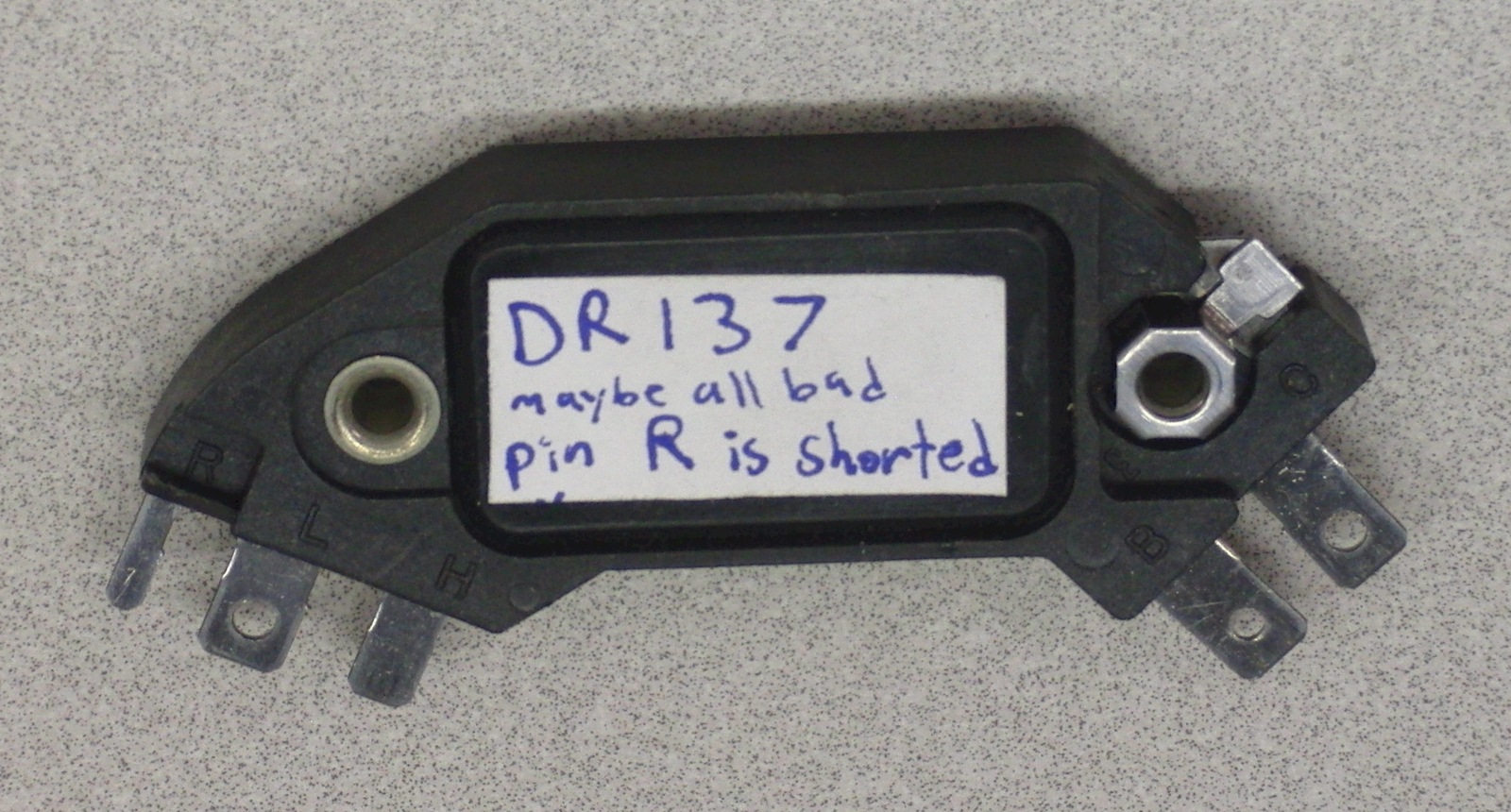

5D-Pin HEI Module Class
7-Pin HEI Module Class
Autozone, Duralast DR124 7-pin HEI module.

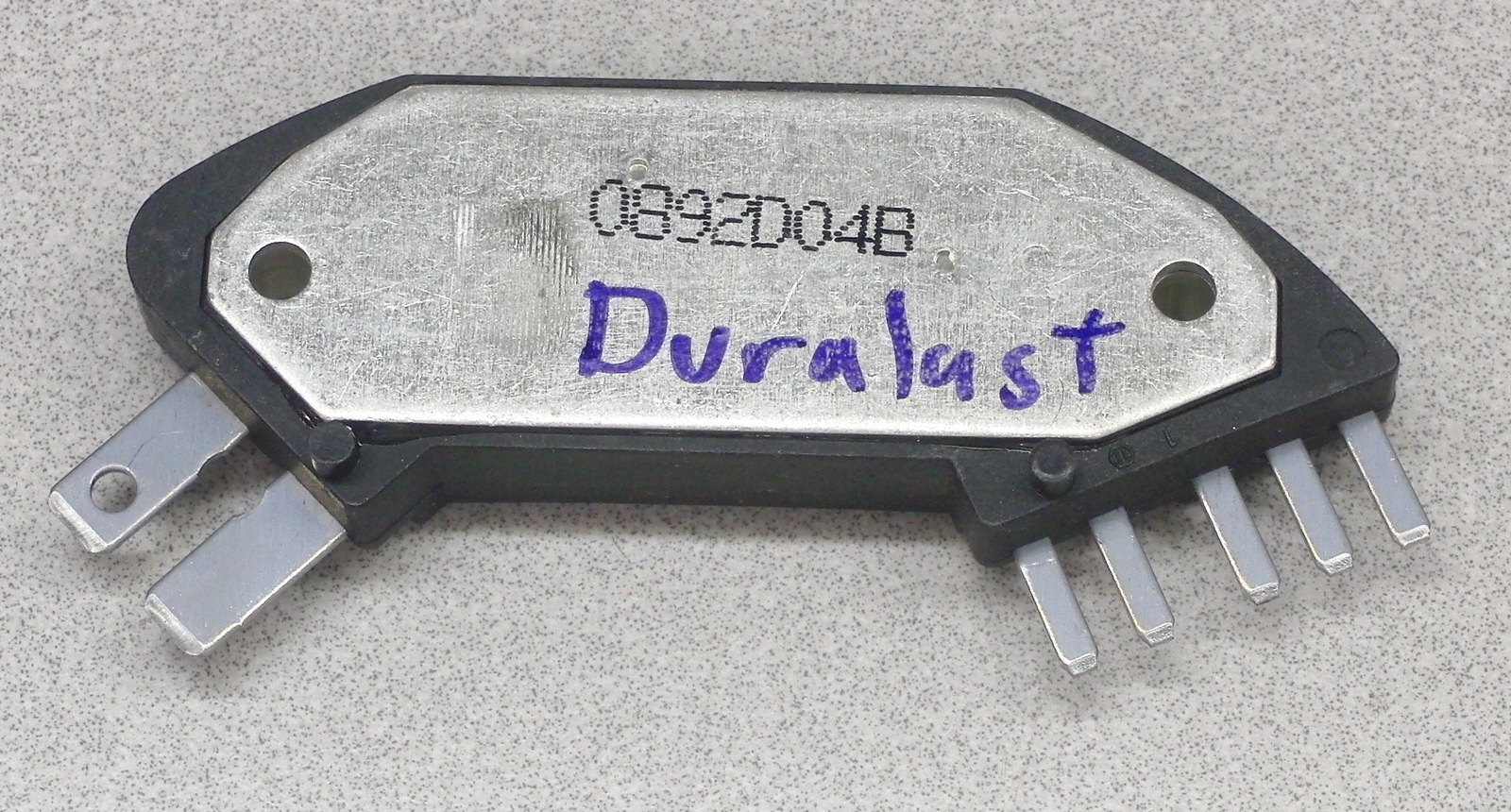
Autozone, ValuCraft/TruGrade DR124VC/DR124TG 7-pin HEI module.
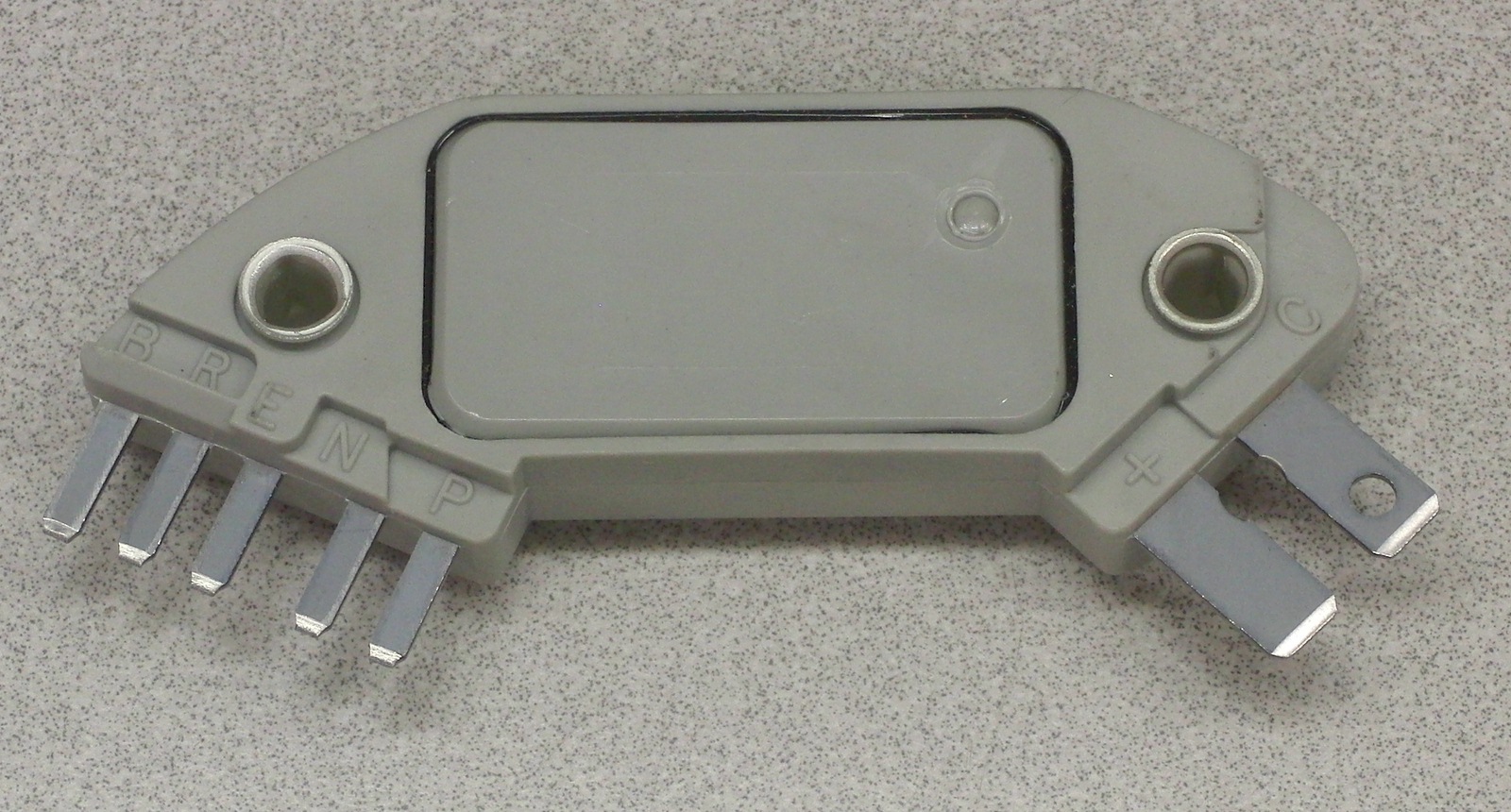
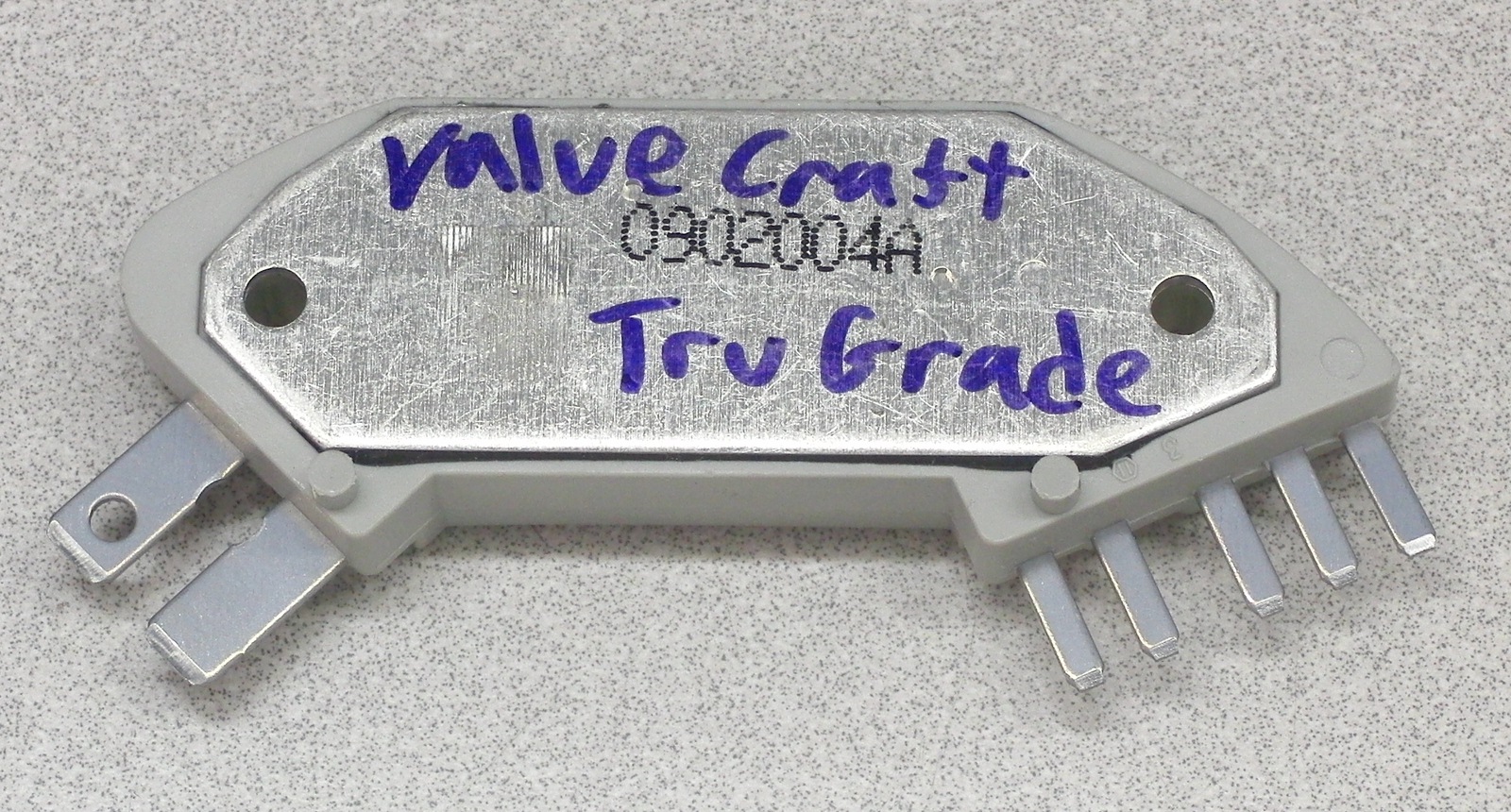

Notes on Duralast DR124, 7-pin HEI module: Hei7pinDR124moduleNotes.txt